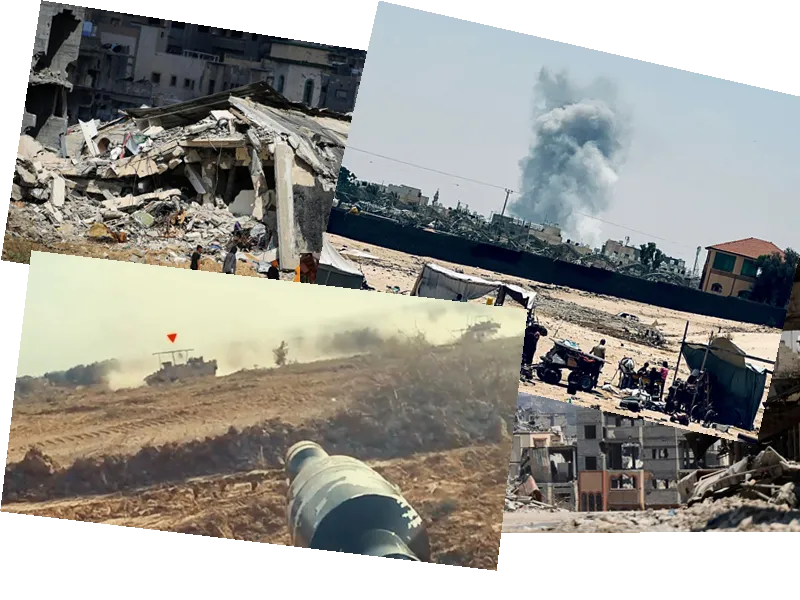The Israeli army has intensified its bombardment of the Gaza Strip, particularly in the north, amid ongoing fierce fighting against Hamas in the Shujaiya sector. Tens of thousands of Palestinians have been forced to flee the area. The conflict, which began with an unprecedented attack by Hamas on Israel on October 7, has also raised fears of a conflagration in Lebanon.
Numerous airstrikes targeted Gaza City, Rafah, and Khan Younes, as Israeli forces continue their operations. Israeli Prime Minister Benjamin Netanyahu stated that dozens of terrorists are being eliminated daily, with the fight being waged both on the ground and underground. The Israeli army has reported eliminating several terrorists, discovering weapons, and striking numerous terrorist infrastructures.
Since the start of the war, the conflict has led to significant population displacements in Gaza, a territory already besieged by Israel and suffering from shortages of water and food. The UN has described the living conditions in Gaza as disastrous, with humanitarian aid arriving only sporadically.
In Tel Aviv, thousands of demonstrators have gathered to demand the return of hostages and to protest against Netanyahu's handling of the war. A plan presented by U.S. President Joe Biden for a ceasefire and exchange of hostages has remained unfulfilled due to irreconcilable demands from both sides. Hamas insists on a total Israeli withdrawal from Gaza, while Israel is determined to continue the war until Hamas is defeated and all hostages are released.
The war has seen daily exchanges of fire between the Israeli army and Hezbollah on the Israeli-Lebanese border, causing tens of thousands of residents to flee. The conflict has also resulted in significant damage to Israeli military vehicles, with over 500 armored vehicles reported damaged since October 7. Israeli military officials have expressed frustration over the ongoing operations, noting the resilience of Hamas and the exhaustion of Israeli soldiers.
- The Israeli army's ground offensive in Rafah, a border town with Egypt, was initially presented as the final stage of the war against Hamas. However, fighting has intensified in other regions, challenging the army's control.
- The attack by Hamas on October 7 resulted in the deaths of 1,195 people, mostly civilians, according to official Israeli data. In retaliation, Israel's offensive on Gaza has so far left 37,877 dead, mostly civilians, including at least 43 in the past 24 hours, according to the Health Ministry of the Hamas-led Gaza government.
- Negotiations for a ceasefire and the release of hostages have stalled, with no progress reported. Hamas demands a permanent ceasefire and a total Israeli withdrawal from Gaza, while Israel insists on continuing the war until Hamas is eliminated and all hostages are released.
- The conflict has also seen significant damage to Israeli military equipment, with more than 500 armored vehicles damaged. The Israeli army has established logistical centers inside Gaza to repair these vehicles, but soldiers are reportedly exhausted both physically and psychologically. The war has consumed more weapons than the Israeli army had estimated, leading to increased arms purchases in recent months.






